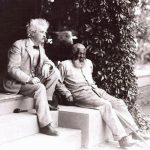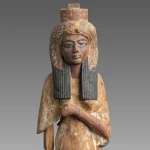Rare Corpse Flower Blooms at San Diego Botanic Garden
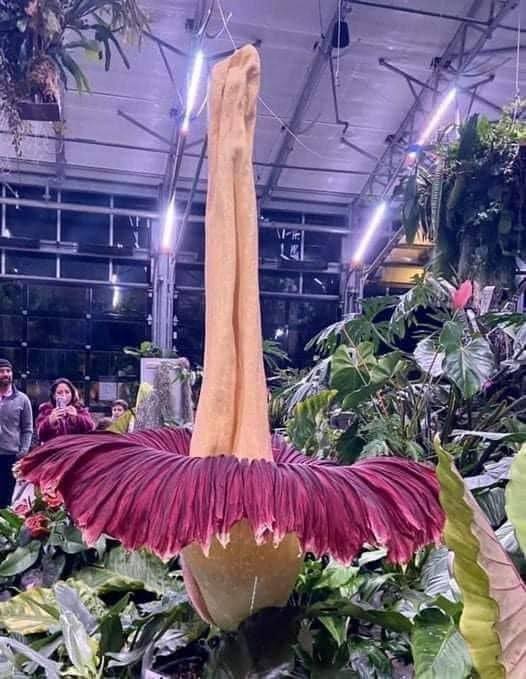
Rare Corpse Flower Blooms at San Diego Botanic Garden
This afternoon at 3 p.m., visitors to the San Diego Botanic Garden witnessed a rare and extraordinary sight: the blooming of an Amorphophallus titanum, better known as the corpse flower.
The plant is famous for its staggering size—it produces the largest unbranched flower in the world—and for the powerful stench it releases when in bloom. The odor, often compared to rotting flesh, is nature’s strategy to attract insects that feed on carcasses, which in turn pollinate the plant.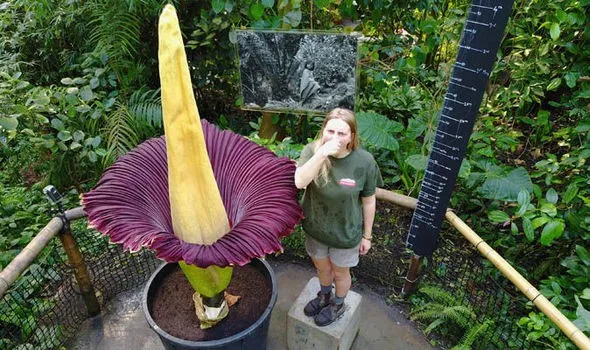
Corpse flowers are notoriously unpredictable. They typically require seven to ten years to produce their first bloom. After that, they may bloom only once every four to five years, depending on conditions. When they do open, the spectacle is fleeting: the bloom usually lasts no more than 48 hours before collapsing.
The specimen at San Diego is 14 years old. Garden officials noted that it last bloomed in 2018, making today’s event especially anticipated by plant enthusiasts and scientists alike.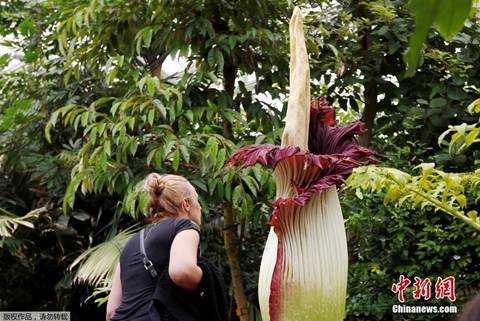
When the flower finally unfurled its massive spathe, visitors were struck not only by its unusual beauty but also by its pungent odor, which could be detected even before entering the conservatory. Despite its reputation, the smell is part of what draws crowds—an olfactory reminder of the strange and fascinating strategies plants use to survive.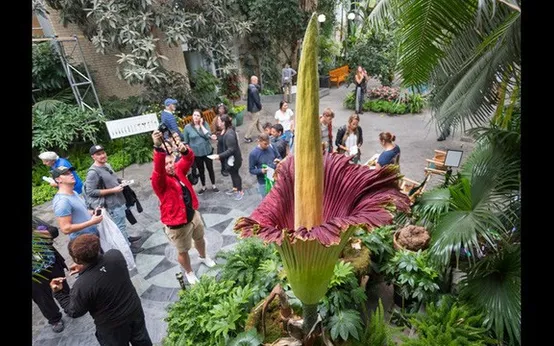
Botanists at the garden explained that the timing of the bloom is crucial for both pollination and research. Insects such as carrion beetles and flesh flies are naturally drawn to the smell, and while the plant rarely produces viable seeds in cultivation, scientists often attempt to hand-pollinate the bloom during its short window.
The San Diego Botanic Garden expects a steady stream of visitors throughout the next two days, as the bloom will likely begin to fade within 48 hours. For those who miss it, the wait could be years before the same plant flowers again.
“Each bloom is a once-in-a-lifetime experience for many people,” said one horticulturist at the garden. “You never forget the sight—or the smell.”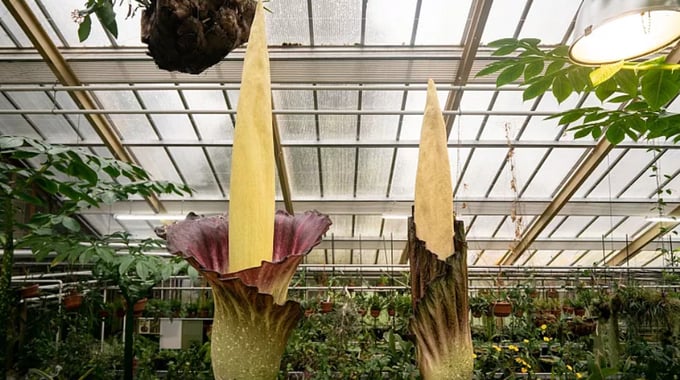
For now, the garden is celebrating not just the size of the flower, but the wonder it inspires. The corpse flower may smell of death, but to visitors, it represents one of the most remarkable expressions of life in the plant kingdom.
